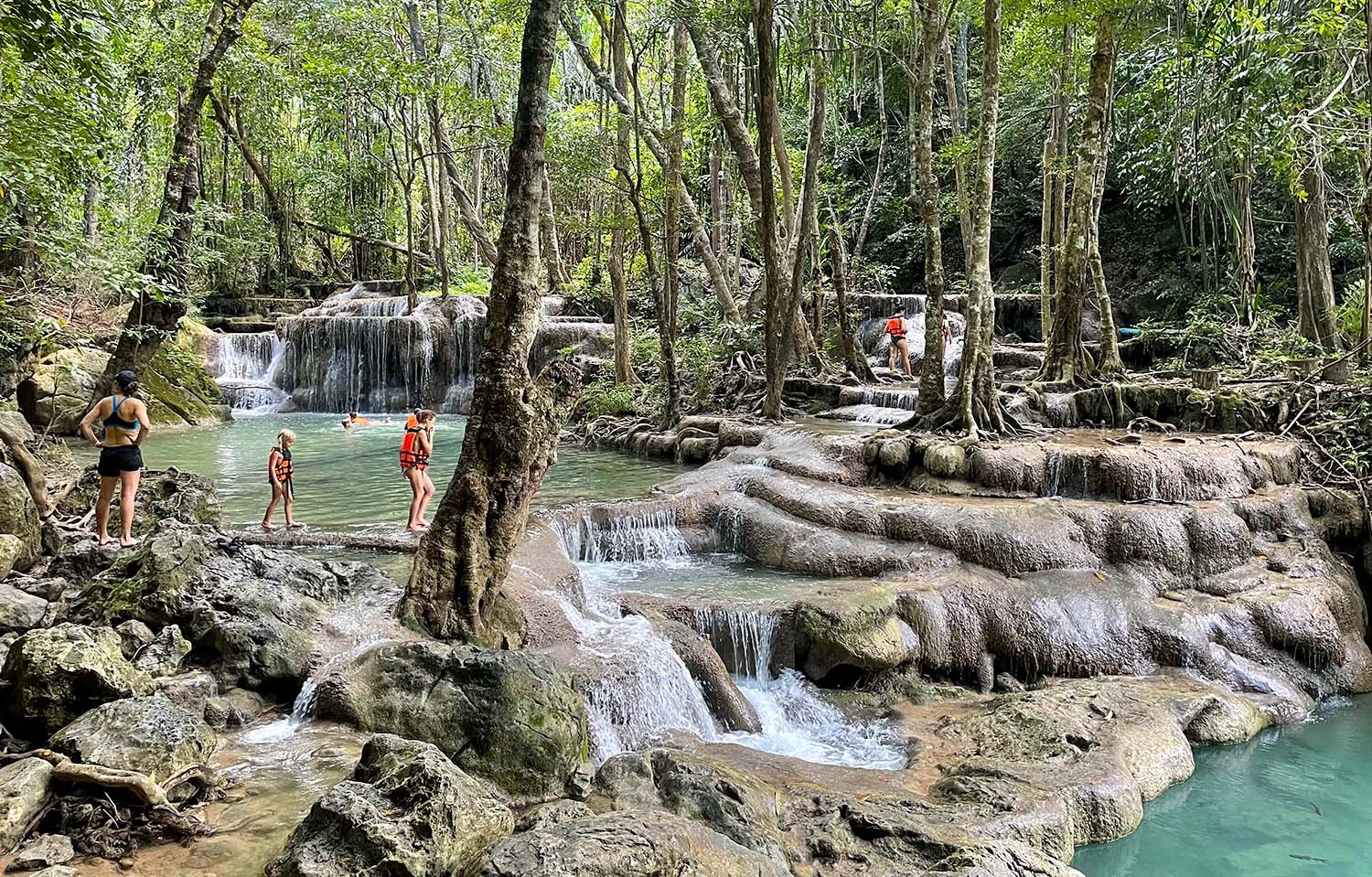Discovering the Enchanting Erawan Waterfall
Nestled in the heart of Thailand’s Kanchanaburi Province, Erawan Waterfall is a natural wonder that captivates visitors with its ethereal beauty and ecological significance. Named after the three-headed elephant of Hindu mythology, this seven-tiered cascade is renowned for its turquoise pools, lush surroundings, and dynamic ecosystem. Part of Erawan National Park, the waterfall has become a symbol of Thailand’s commitment to preserving its natural heritage. As one of the country’s most iconic destinations, it offers more than just scenic views—it invites exploration of its geological origins, biodiversity, and cultural resonance. This article delves into the layers of Erawan’s allure, from its formation to its role as a sanctuary for both nature and human imagination.
A Geological Marvel
Erawan Waterfall’s striking appearance is rooted in its unique geology. The cascades are formed by limestone bedrock, which dissolves over time to create natural terraces and pools. Mineral-rich waters, filtered through ancient rock, deposit calcium carbonate, giving the pools their signature milky-blue hue. Each of the seven tiers varies in character: some feature gentle cascades, while others plunge dramatically into deep basins. The highest tier, resembling the mythical Erawan elephant, drops 1,500 meters, showcasing the power of natural erosion. This geological process, ongoing for millennia, highlights the dynamic relationship between water and rock—a dance that continues to shape the landscape today.
Biodiversity in the Mist
The waterfall’s ecosystem thrives in its humid microclimate. Surrounding forests are home to rare species like the dusky langur and the giant wood spider, while the pools host freshwater fish such as the striped stone loach. Visitors often spot butterflies like the common Mormon fluttering among orchids and ferns. The park’s biodiversity is protected under Thailand’s conservation laws, ensuring habitats remain undisturbed. Researchers have documented over 150 bird species here, including the endangered white-handed gibbon. This rich tapestry of life underscores Erawan’s role as an ecological refuge, where even small organisms play vital roles in sustaining the environment.
Myth and Majesty: Cultural Significance
Erawan’s name and lore are deeply tied to Thai culture. Local legends claim the waterfall’s tiers represent Erawan’s celestial form, with the highest cascade symbolizing its head. Nearby shrines dedicated to Hindu deities reflect the region’s historical connections to Indian traders. For centuries, communities have revered the site as sacred, offering prayers for prosperity. Today, this spiritual legacy intertwines with tourism, as visitors leave flower garlands at shrines or meditate by the pools. The waterfall’s mystique has also inspired Thai art and literature, cementing its place in the nation’s cultural identity.
A Sanctuary for All
Erawan National Park balances accessibility with preservation. Well-maintained trails allow hikers to explore all seven tiers, while designated swimming areas let visitors immerse themselves in the pools. Park authorities enforce strict rules against littering and wildlife disturbance, promoting sustainable tourism. Seasonal variations add to its charm: monsoon rains amplify the falls’ power, while the dry season reveals hidden rock formations. Whether for adventure, relaxation, or education, Erawan offers a space where nature and humanity coexist harmoniously—a testament to thoughtful conservation.
Conclusion: The Eternal Flow of Erawan
Erawan Waterfall stands as a testament to nature’s artistry and resilience. From its geological origins to its vibrant ecosystems, the site embodies the interconnectedness of Earth’s processes. Culturally, it bridges ancient mythology and modern reverence, inviting reflection on humanity’s relationship with the natural world. As a protected sanctuary, it challenges us to prioritize conservation while embracing wonder. For travelers, researchers, and dreamers alike, Erawan offers more than beauty—it provides a living lesson in preservation, urging us to safeguard such treasures for generations to come. In its cascading waters, we find both a mirror of the past and a promise for the future.
